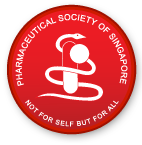Biologic agents are a relatively new class of drugs, and according to a report in the October issue of the JAMA, associated safety problems are often identified only at post-approval stages through the post-marketing surveillance system.
The investigators point out that since 1995, approximately 1 in 4 biologic agents approved in the US & Europe have had at least 1 safety-related regulatory action issued for them. Of this group, 11% received a black-box warning.
It is generally accepted that knowledge of a new drug is incomplete at the time of approval, especially with reference to its safety profile; therefore, unexpected adverse drug events will always occur in the post-marketing setting. This underpins the importance of pharmacovigilance in identifying & then ensuring drug safety.
In 1982, recombinant insulin became the first biologic agent approved in the US. Since then, more than 250 agents have received approval by regulatory authorities. These include recombinant products, monoclonal-antibody-based products, and recombinant vaccines. Between January 1995 and June 2007, a total of 174 biologic products obtained approval during the study period, of which 136 were approved in the US, 105 in the European Union, and 67 in both regions.
They authors found that between January 1995 and June 2008, 82 safety-related regulatory actions were issued for 41 of the approved biologic agents (23.6%): 46 "dear healthcare professional" letters, 17 direct healthcare professional communications, and 19 black-box warnings. None of the agents were withdrawn from the market for safety reasons.
Biologic Agents Used in Cancer Therapy That Received Black-Box Warnings
| Name | Date approved | Warning | Time to black-box warning |
| Cetuximab ( Erbitux) | February 12, 2004 | Cardiopulmonary arrest | 2.0 years |
| Gemtuzumab ozogamicin (Mylotarg) | May 17, 2000 | Hypersensitivity reactions, including anaphylaxis, infusion reactions, pulmonary events, and hepatotoxicity | 0.8 years |
| Ibritumomab tiuxetan (Zevalin) | February 19, 2002 | Severe cutaneous and mucocutaneous reactions | 3.6 years |
| Rituximab (Rituxan) | November 26, 1997 | Fatal infusion reactions, tumor lysis syndrome, and severe mucocutaneous reactions | 8.2 years |
| Progressive multifocal leukoencephalopathy | 9.2 years | ||
| Trastuzumab (Herceptin) | September 25, 1998 | Infusion reactions, pulmonary toxicity | 3.2 years |
The researchers also observed that biologic agents that were first in class to obtain approval had a higher risk for a first safety-related regulatory action, compared with later-approved products in the same class (12.0/1000 vs 2.9/1000 months; hazard ratio, 3.7). The data also demonstrated that within the group of biologic agents, monoclonal antibodies, cytokines, growth factors, interferons, and receptors might be more susceptible to adverse drug reactions than hormones.
The current post-marketing surveillance system has several fundamental shortcomings and flaws, eg. the procedures is voluntary, passive collection of adverse drug reactions, unreliable denominators for calculating rates of adverse effects, and difficulty determining whether the adverse effect is due to the drug or the condition for which the drug is used.
JAMA. 2008;300:1887-1896, 1939-1941.
**********


